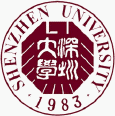Location
Jinan
Event Website
http://icdcs2020.ujn.edu.cn/
Keywords
Time similarity; Environment; Relative information entropy; Concrete structures; Durability
Abstract
The Multi-environmental time similarity (METS) method is a testing method that establishes the similarity relationship between the indoor test environment and the on-site environment to evaluate the durability and predict service life of the proposed or under-constructed concrete structure. Based on the METS theory, a similarity ratio of chloride ion concentration and diffusion coefficient between the indoor accelerated environment and the on-site natural environment was established. Then the relative information entropy was introduced into the Multi-Environmental Time Similarity based on Relative Information (RI-METS) theory to consider the time variability of the diffusion coefficient and the surface chloride ion mass fraction. Then the service life of a component in a marine chloride environment by Monte-Carlo simulation method was predicted.
Included in
Application of Multi-environmental time similarity theory based on relative information (RI-METS) theory in durability of concrete structures in marine chloride environment
Jinan
The Multi-environmental time similarity (METS) method is a testing method that establishes the similarity relationship between the indoor test environment and the on-site environment to evaluate the durability and predict service life of the proposed or under-constructed concrete structure. Based on the METS theory, a similarity ratio of chloride ion concentration and diffusion coefficient between the indoor accelerated environment and the on-site natural environment was established. Then the relative information entropy was introduced into the Multi-Environmental Time Similarity based on Relative Information (RI-METS) theory to consider the time variability of the diffusion coefficient and the surface chloride ion mass fraction. Then the service life of a component in a marine chloride environment by Monte-Carlo simulation method was predicted.
https://docs.lib.purdue.edu/icdcs/2022/partiv/2





